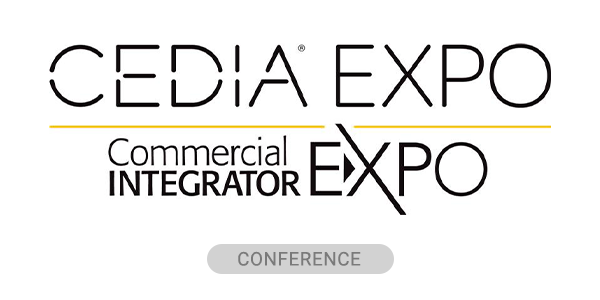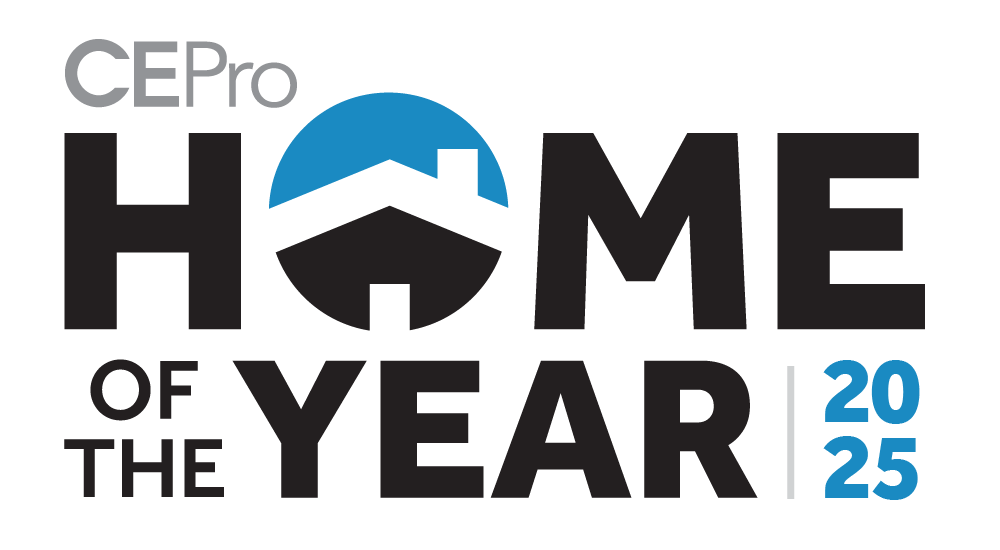Nearly 33 years ago, Brian Perreault began as a salesman at one of a handful of retail location of what was then called Barrett’s Audio Video in the Chicago area. At first, the job was just that: a job. Perreault had a change of heart and dropped out of college, taking a semester to figure out what he wanted to do. Barrett’s was only a “stop gap” solution while he considered other degrees at other schools.
But, what was meant to be a temporary job and a source of income to fund typical 20-year-old college student activities became a career, as Perreault learned from owner Joe Barrett the skills, knowledge and strategy needed to succeed in a challenging industry.
Now, Perreault is now entrenched in the custom home integration industry as owner and president of what is now Barrett’s Technology Solutions and an involved member of industry groups like HTSA as a two-year president and eight-year board member.
“I just kind of fell in love with the industry,” Perreault says, recounting his introduction into the world of home entertainment technology. “At the time I joined the company, I never could have imaged that I’d be with the same company 33 years later, let alone having ownership of the company.”
Barrett’s ‘Case Study in Succession Planning’
Joe Barrett, the president and owner of the company who hired Perreault, in 1993 took over his namesake company from his father who started the firm in 1966 as one of the only Magnavox TV dealers in the country. He says he knew right away that Perreault would have a long career in the industry.
Calling him a “breath of fresh air” since he first walked in the door, Barrett says it was apparent that Perreault had a knack for selling technology, but he had other qualities that some salesmen lacked.
“He was a company guy first — not all salesmen are,” Barrett says. “He acted like an owner from the get-go, and I identified early on that this was the guy I’m going to work hand-in-hand with.”
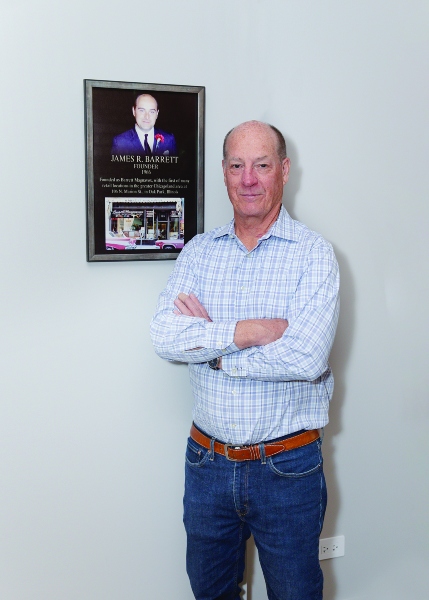
Joe Barrett stands in front of a plaque of his father who originally founded Barrett’s in 1966 as a Magnavox dealer. Photo/Mila Samokhina
Barrett recalls when just three years into Perreault’s career at the company, a rival began poaching talent from his sales staff, and his young protégé was a top target. Barrett, however, wouldn’t have it. With the promise of being elevated into leadership positions, Barrett took Perreault under his wing and gave him more responsibilities, beginning what could be considered a case study in succession planning.
Barrett knew the value of earning a seat at the table. Despite growing up in retail and finding he had a knack for selling TVs as a teenager, Barrett didn’t want to start working for his whip-smart businessman father without first experiencing the business world outside of Illinois and the family business.
Related News: CEDIA Previews Revamped Education Program Planned for 2025 CEDIA Expo
Rather than go to work for the company right out of high school, Barrett got a business management degree and enrolled in an executive management program at Macy’s, where he learned how to be a buyer in portable audio technologies and negotiate with manufacturers.
After the five-year program at Macy’s, Barrett joined Platt Music Corporation, a company that he notes played a pivotal role in the development of consumer electronics retail.
“At that time, all the big-box retailers were just emerging,” he recalls. “Before that, there was no such thing as Best Buy or Circuit City. The major players were department stores like Sears and Montgomery Ward, which dominated the market.”
Rising Up Within the Big Box Boom
Later, as specialized electronics retailers began to take hold, department stores grew increasingly concerned about losing their AV business. Consumers were no longer inclined to ride an escalator up six floors to buy a television when they could simply visit a massive warehouse-style store dedicated to electronics. Sensing an opportunity, Platt Music Corporation devised an innovative strategy: rather than compete directly, they leased out and took over the AV departments within these department stores.
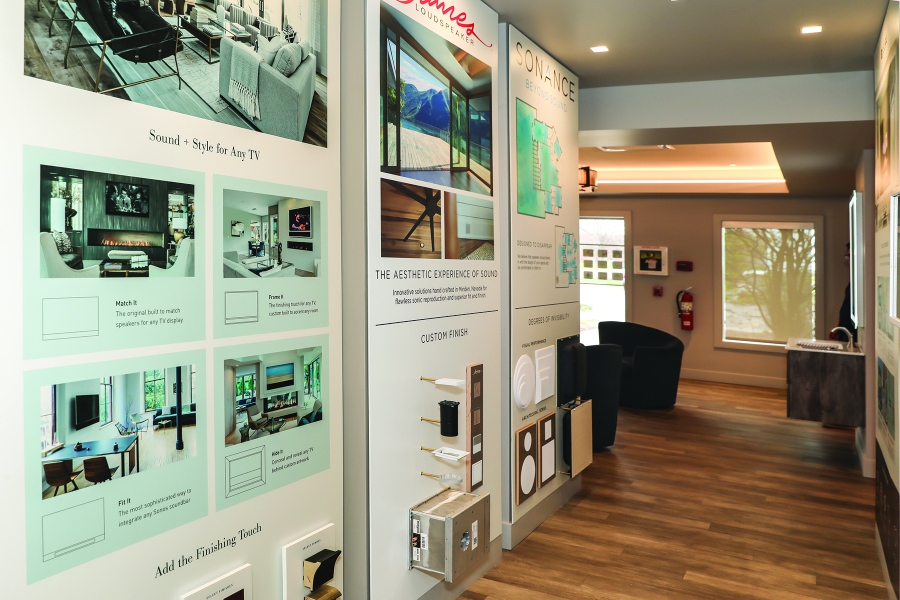
Photo/Mila Samokhina
The company expanded rapidly, securing AV departments in 14 department store chains and overseeing operations in 170 storefronts in prime location in New York City, Chicago and Southern California.
Barrett eventually became the merchandise manager, a position that placed him at the forefront of negotiations with major Japanese electronics manufacturers. Platt Music Corporation’s AV business surged to an impressive $600 million in revenue, making it one of the top four AV retailers in the country.
Barrett spent five years with the company, gaining invaluable insights into the business side of consumer electronics. This foundation would later serve him well as he transitioned into his family’s business when a family member wanted to sell off stock and exit the company.
With a good decade of experience and education, Barrett in 1988 went to work for the family business, making sure that the company positioned itself as a specialist in home entertainment systems, pitting its stores against the rising big box stores.
“We just Robin Hooded ’em all day long,” Barrett proudly asserts. “They were selling Pioneer; we were selling Pioneer Elite. When they were selling Sony; we were selling Sony ES. They were selling mid-fi; we were selling real Hi-Fi.”
Adapting Through Crisis
That success in retail lasted until the economic crisis in 2008, when consumers’ spending money all but dried up. That forced Barrett’s to focus less on retail and hardware and more on custom services and support, an area that had already been growing steadily for years thanks to Perreault’s urging and his rising influence in the company.
The company downsized its retail footprint to one large flagship store and leaned heavily into the custom services and installation side, essentially becoming a system integrator, with Perreault a leading voice behind the new strategy.
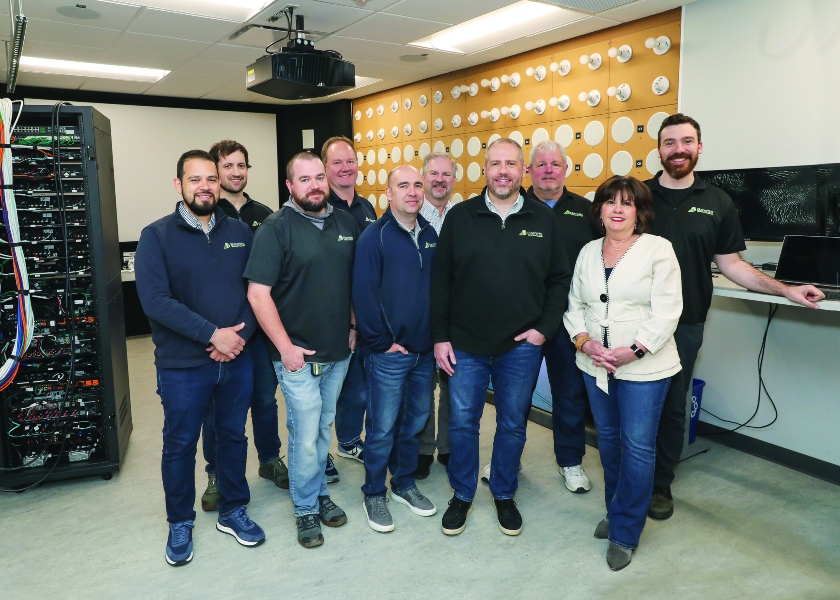
Photo/Mila Samokhina
“That was a big push by Brian to go with what has been successful,” Barrett tells CE Pro.
After a few years of trying to be a hybrid retail and custom installation company, Barrett’s in 2020 closed its last retail location and opened a showroom in an office park, recognizing that the company’s future success would rely solely on the new and growing identity as a custom home system integrator.
By this point, Perreault was chief operating officer of the company and was made a partner in the firm, overseeing the day-to-day operations of the company with Barrett focused on the big picture and business development. This was a move that Perreault described as a “steppingstone” to majority ownership and leadership of the company. He has essentially been running the company since then.
Selecting the Next Generation of Leadership
In the last few years, those conversations about a transition became more intense, with Barrett making sure to turn over his big-picture-focused business relationships over to his COO who would eventually take over those relationships.
“He was very cognizant of making sure that other people in the company were involved in those interactions, and that it wasn’t just Joe Barrett,” Perreault says. “It certainly made things a lot easier when it came time to transition, because the relationships made through his business development efforts were really relationships that the entire company had.”
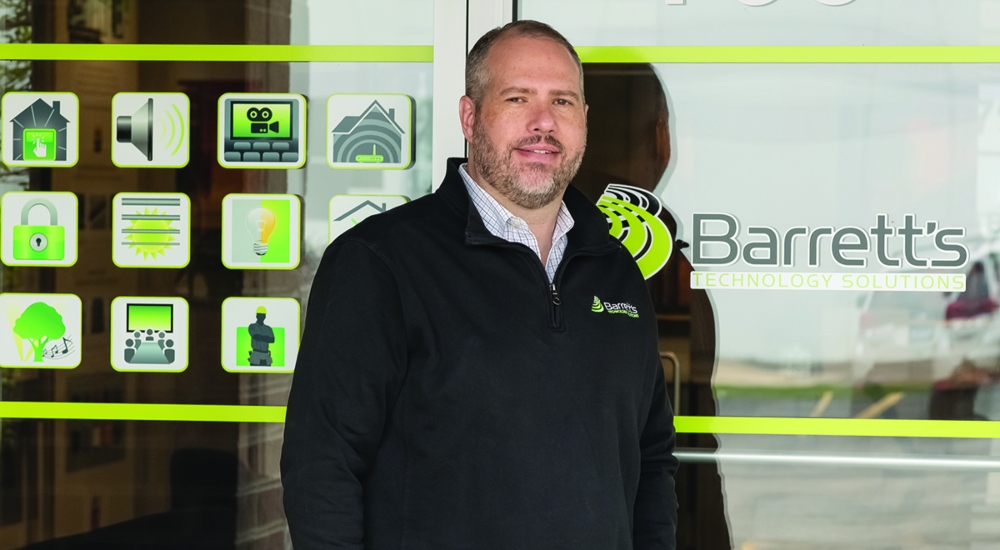
Brian Perreault stands as the new owner and president of Barrett’s Technology Solutions. Photo/Mila Samokhina
Now, Barrett describes Perreault as “the most qualified new owner in the company’s history,” with a resume that includes being a two-time president and eight-year board member of HTSA.
“Talk about a strong transition of ownership,” Barrett says, adding that he has also been a longtime board member and three-time HTSA president. “The background is very strong.”
How Barrett’s Positions Itself for Future Success
Each time the company has seen its leadership shift to a new generation, it had been years in the making. Barrett earned his degree and gained valuable experience in the consumer electronics industry before joining his family’s company, and Perreault acted as Barrett’s right-hand man for over a decade before the trigger was pulled.
That very purposeful, deliberate approach is why Barrett’s is positioned so well for the future of this unique industry. Perreault says his mentor and former boss has put him in a position to have autonomy for many years.
“When it came time to hand over the reins, it was really nothing new,” Perreault says, crediting that invaluable experience. “There wasn’t some seismic shift that had to take place. It was just continuing to do what I’ve been doing.”
Having already made his mark on the company over a span of three decades, Perreault simply wants to continue to build upon the company’s current success in custom installation projects. Meanwhile, Perreault is on the lookout for the next big thing, which sometimes seems like a long, fluid list of any number of new technologies.
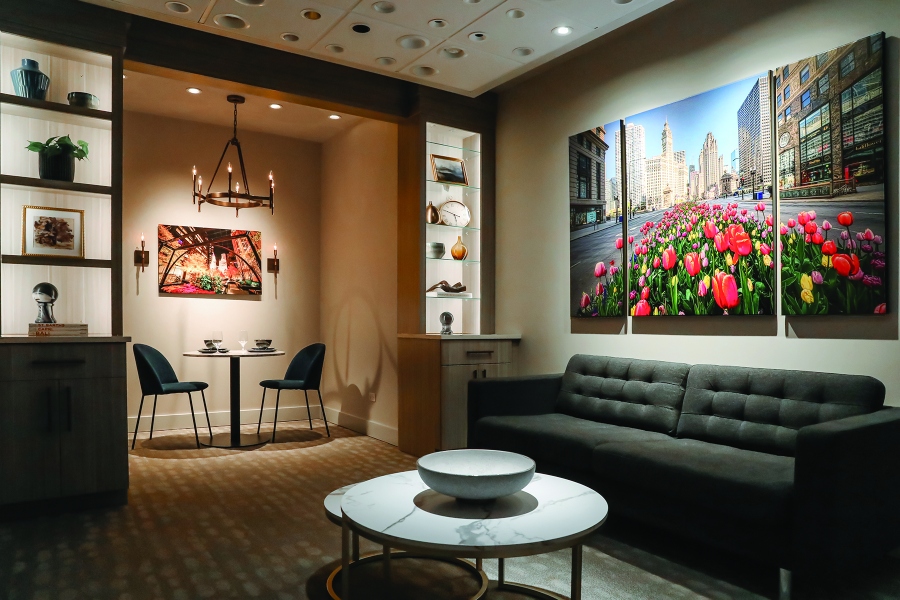
Photo/Mila Samokhina
One of the company’s focuses, which transcends technology, is a focus on design rather than overwhelming clients with extensive proposals. The company prioritizes education, relationship-building, and securing a design retainer to slow down the project lifecycle and ensure thoughtful integration.
This approach allows for better collaboration with stakeholders and more precise system planning. Ultimately, Barrett’s focuses on creating a seamless client experience from initial consultation to final project handover.
This thoughtful approach also helps the company integrate technology seamlessly, keeping architects and interior designers happy and worry-free about having to hide unsightly black boxes and other equipment.
“That approach really resonates with our clients,” Perreault says. “There’s a lot of collaboration that it takes to make that possible.”
‘Deliberate, Calculated, Intentional Innovation’
Perhaps it is wisdom ingrained in the company’s DNA that led it through two succession plans and nearly 60 years of success, but Perreault’s strategy for the company appears to take a page out of his transition playbook: one focused on deliberate, calculated, intentional innovation.
When new technology or products come to the market, Perreault and his team carefully vet them in an in-house testing lab to make sure it’s ready to be integrated into a customer’s home system.
“We’re going to slow down that process a little bit,” Perreault says. “We’re going to make sure it is what we think it is before we put it into a project.”
Like its strategy to new technologies, the company is well-position to adapt to economic situations that either call for a focus on new constructions or retrofits. Barretts even has a small projects team focused on retrofits and upgrades for its database of clients that go back nearly six decades.
That client list and relationships remain strong, due in part to a long history of being calculated and intentional in everything Barrett’s Technology Solutions does.
“Because of our legacy,” Perreault says, “multiple generations are coming to us for their needs.”
Keep Reading:
Hear how Big AV plans to transform custom integration for new businesses
Check out SoundVision’s approach to industry networking for trade partners
Or listen to Azione’s Patrick McCarthy talk on his plans for the CI Channel

